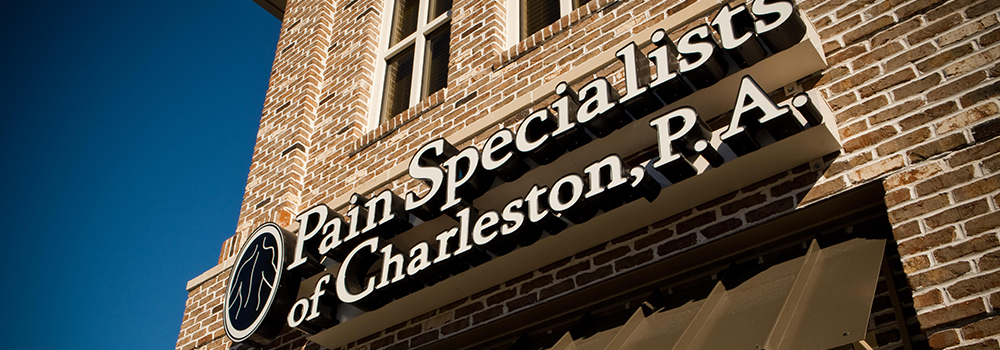There is no situation more frustrating – and debilitating – than being unable to go about your daily routine due to shooting pain. Sciatica is a condition that can range from a dull ache to an electric shock-like sensation, moving down the lower back into the buttock and leg.
While some cases of sciatica can resolve on their own, seeking immediate pain relief may be closer than you think when you instill the right help.
At Pain Specialists of Charleston, we believe in helping you manage and alleviate your pain without the need for surgery or habit-forming medications. Say goodbye to the sigh-inducing agony of sciatica and keep reading to find out how we can help you on your journey to a pain-free life.

What is Sciatica?
Sciatica is nerve pain that results from an injury or compression of the sciatic nerve. The sciatic nerve is the longest and thickest nerve in the body, comprised of a bundle of nerves branching off the spinal cord.
Each sciatic nerve runs through the hip and buttock, down the leg, and stops just below the knee. From there, it splits off into other nerves that move all the way down to your feet and toes. Due to this connection of nerves, the pain from sciatica can move and radiate from your lower back to the tips of your toes.
Sciatica is an incredibly common condition, affecting about 40% of people in the U.S. in some way, shape, or form.
Causes Behind Sciatica
Sciatica is not so much a disease as it is a resulting effect or symptom of an injury or underlying condition.
Sciatica can occur for several reasons, from a previous injury to a lack of physical activity. However, healthcare providers often have difficulty finding an exact cause.
Underlying conditions or injuries may lead to sciatica pain, including:
- Herniated discs
- Degenerative disc disease
- Spinal stenosis
- Osteoarthritis
- Prior injuries
- Pregnancy
Men between the ages of 30 and 50 years old are more likely to have sciatica. It is uncommon for individuals younger than 20 years old to experience sciatica pain unless it’s attributed to a specific injury.
How Do I Know If I am Experiencing Sciatica? Signs and Symptoms
Pain is a common symptom of sciatica but can vary from person to person. For one, it can feel like a mild tingling or burning sensation. For another, simple movements can be met with increased and severe pain.
Pain may be constant or intermittent and is typically felt in the leg compared to the back. Other symptoms of sciatica may include:
- A pins-and-needles or numb sensation
- Feelings of heaviness or weakness in the leg and foot
- Increased pain while sitting, standing for long periods of time, or while coughing
- Pain relief while walking, applying a heat pack, or pelvic exercises
Sciatica pain can differ between the specific nerve roots, resulting in different pain locations or difficulty moving certain parts of the body.
Speak with a pain management physician if you believe you are experiencing symptoms related to sciatica or if you are having increased pain in specific areas of your back or leg.
How to Get Rid of Sciatica Pain Permanently: Is it Possible?
The good news is that, more often than not, sciatica typically goes away within 4 to 6 weeks. However, sciatica pain can be recurring, especially when someone has a chronic condition.
However, there are ways to treat sciatica pain using interventional pain management techniques that don’t require surgery!
Some of the most common treatment practices for sciatica include:
- Lumbar epidural steroid injection (ESI): An injection that uses a corticosteroid and local anesthetic to numb the nerve and reduce inflammation
- Transforaminal epidural steroid injection: A spinal injection that targets the nerve fibers of the sciatic nerve
- Spinal cord stimulation: A minimally invasive procedure that sends an electrical pulse to block the pain signals sent from the sciatic nerve to the brain
Along with these pain management techniques, your physician may also recommend lifestyle changes to stop sciatica from recurring.
This may include adding more physical exercise to your routine or undergoing sciatica massage therapy to help relax the muscles and improve blood circulation.
Before changing your daily routine or trying to improve sciatica on your own, talk to a physician at a pain management clinic near you to rule out underlying conditions that could be adding to your pain.
Don’t Sigh Because You Have Sciatica – Smile Because You Have Pain Specialists of Charleston to Help!
Finding the right techniques and treatment plans for pain management in Charleston, SC can be a challenging task – especially when you are already in pain.
That’s why we’re here to help! We understand the frustrations of finding the right approach to your pain, but we make it our mission to provide the most up-to-date interventional treatments that don’t require surgery or medication.
Whether you are interested in learning more about sciatica pain relief massage therapy or simply just getting to the root cause of your pain, we can help every step of the way!
Contact us today to schedule an appointment and get back on track to reclaiming your quality of life.
Request Appointment | Contact Us | Meet Pain Doctors | Visit Us
Additional Helpful Articles:
What Should I Expect During My First Pain Management Appointment?
Interventional Pain Management: Everything You Need to Know
What Does a Pain Management Physician Do?
Does Cracking Your Knuckles Cause Arthritis?
What’s the Best Leg Pain Treatment Without Surgery?
When Should I See a Doctor for Runner’s Knee?
Why Do Side Sleepers Wake Up to Shoulder Pains?
What are the Reasons for Random Pains in My Buttocks?
Get to Know Pain Management Physicians:
Our Services:
Diagnosis | Treatment | Interventional Pain Management | TRICARE | Wellness | Clinical Trials | Worker’s Compensation | Neurology | Imaging/ MRI
Published July 2024

